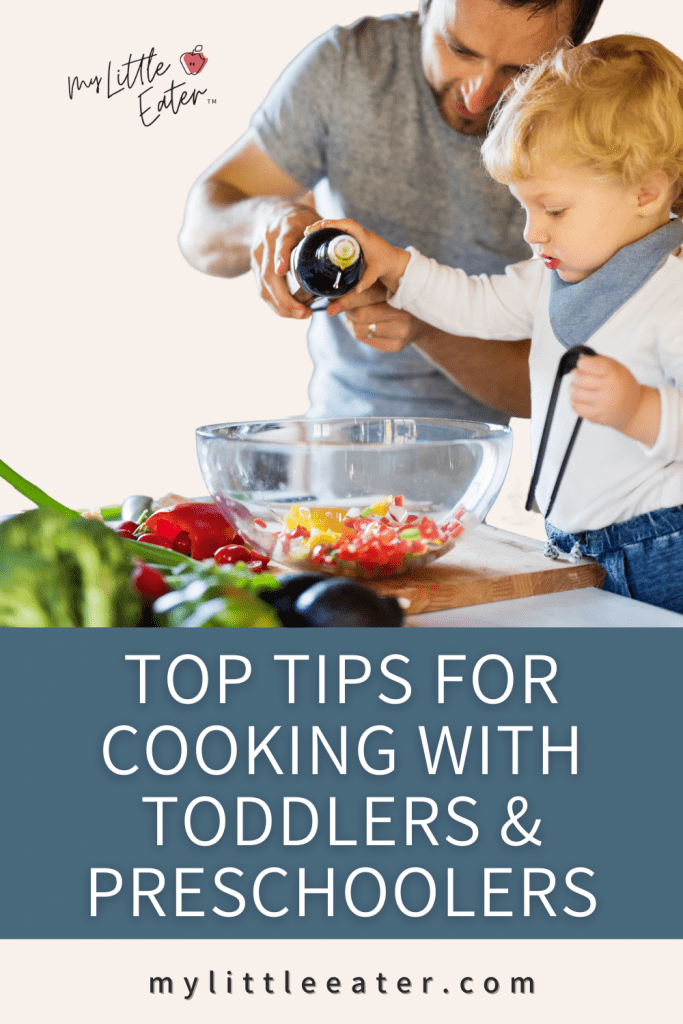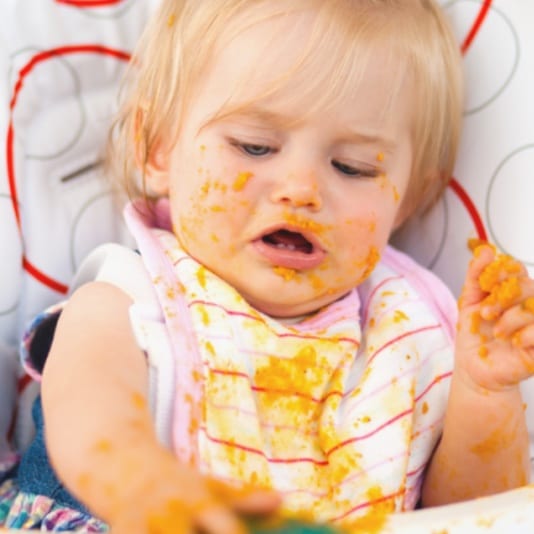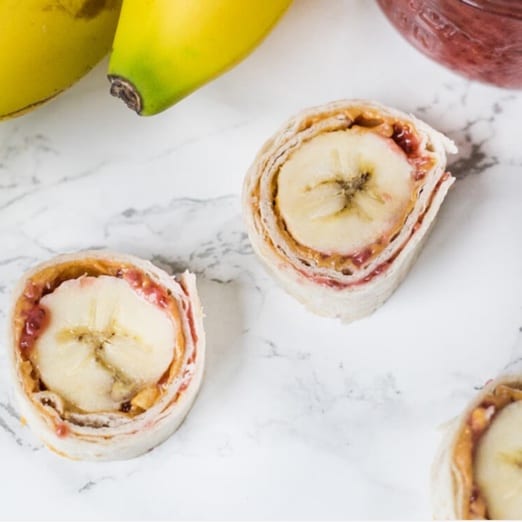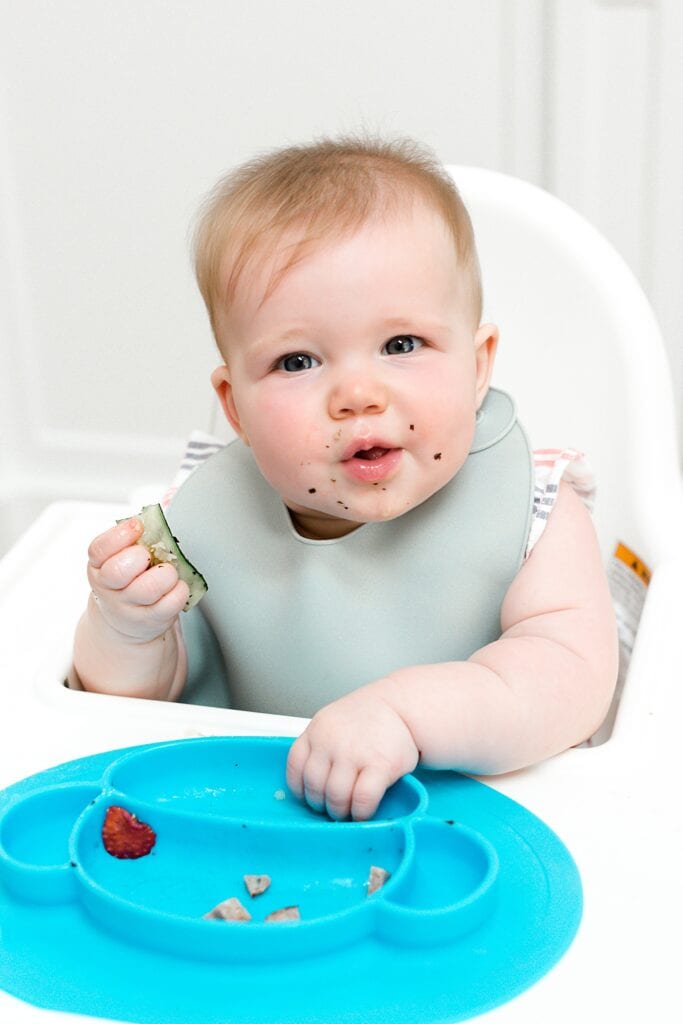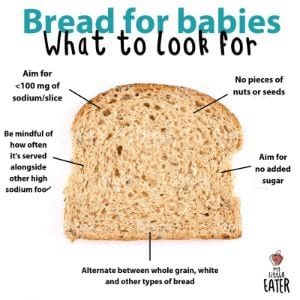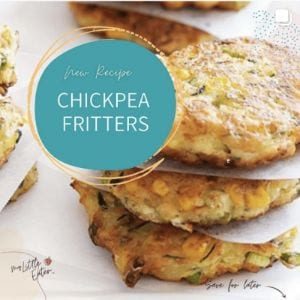As we wrap up another holiday season and prepare to enter into a new year, I’m reminded of a Christmas not long ago where my son asked for a cookbook and cooking supplies. Not exactly top of the list for most 11 year olds, but not surprising for my son to ask for!
From an early age I was conscious of making an effort to bring my boys into the kitchen to cook and prep meals with me. Developing this love for cooking was something that started very early on, from about the age of 3, it certainly didn’t happen overnight. But to say that I’m able to see the benefits of all of that effort now is an understatement!
That’s why I want to share with you my tips for fostering a love for cooking in your toddler and preschooler, including ways to get them involved in cooking from a young age. And while the life-long benefit of teaching your child the skills to be able to cook for themselves is one of the best reasons to do this, getting your toddlers and preschoolers involved in cooking can help with any picky eating tendencies you may be struggling with as well.
Cooking with kids is just one of my many strategies for picky eating, and for a full overview of my step-by-step process for managing or preventing picky eating in toddlerhood and beyond, check out my Feeding Toddlers online course.
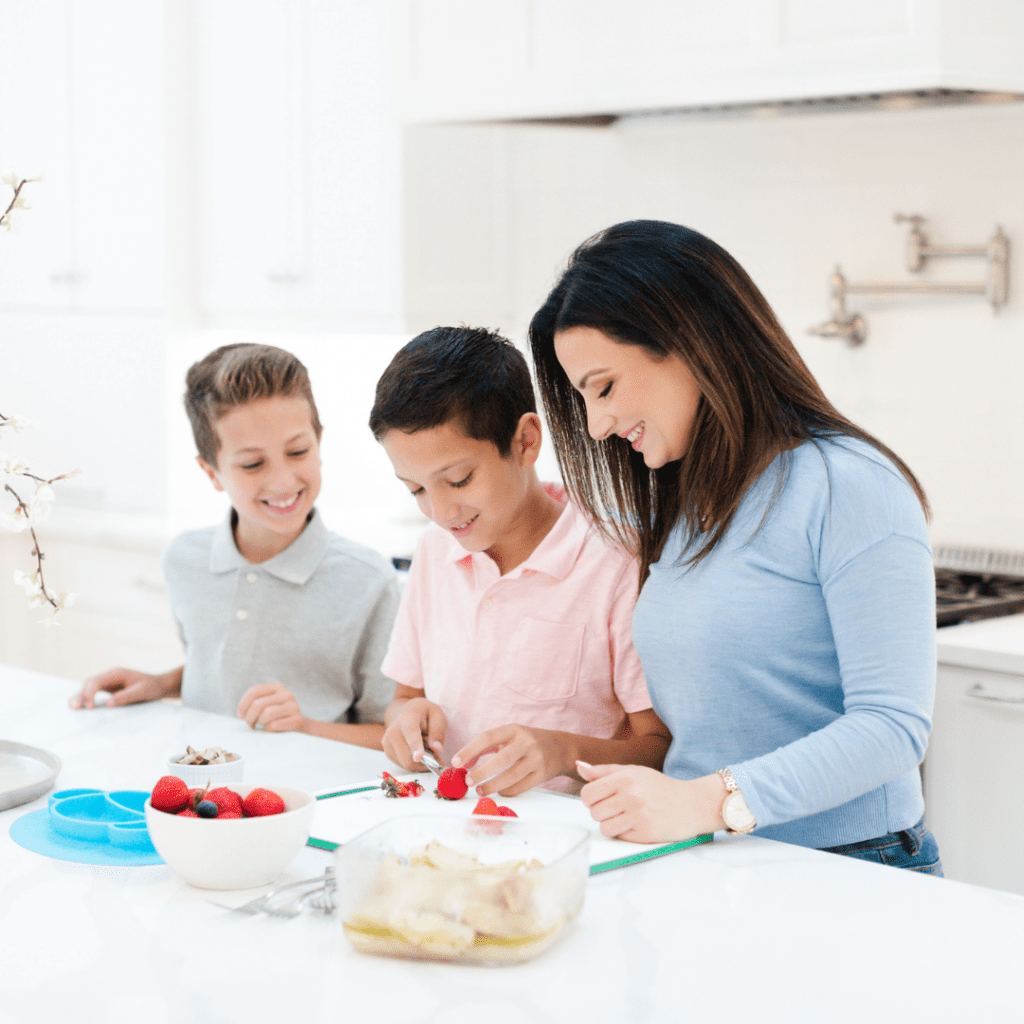
Why you want to cook with your toddlers often
One of my most popular posts on Instagram has been of a simple reel I did showing the benefits of getting your child in the kitchen from an early age. It shows my two boys cooking in the kitchen, on their own, making breakfast for my husband and I.
I get it. It’s the dream that most parents aspire to during those (sometimes) difficult toddler years.
But, the thought of actually having your toddler in the kitchen with you (meltdowns and all) in order to get to that point…not so blissful. That’s why I want you to know, first and foremost, the reasons why you even want to bother with this whole goal of cooking with your toddler.
Reason #1: It helps build their skills in the kitchen
I mean…sort of a no-brainer, but seriously. When you think about the fact that they can use a butter knife or paring knife to chop, dice or slice by the age of 5, or can sauté food over a hot pan by the age of 8 or 9…wouldn’t you want your kids to be able to do this?
There’s nothing age-specific about most of these tasks after the age of 4 or 5. It’s much more about if they’ve been given the opportunity to learn these skills that will determine if they can do them. And if you feel like age 5 is too rushed to be handling a hot pan, I get that. Let’s say it’s age 10. It’s still MILES ahead of most university students we know who have to survive off of boxed mac and cheese because they haven’t built up any cooking skills otherwise. It’s much more about learned skills…not necessarily their age.
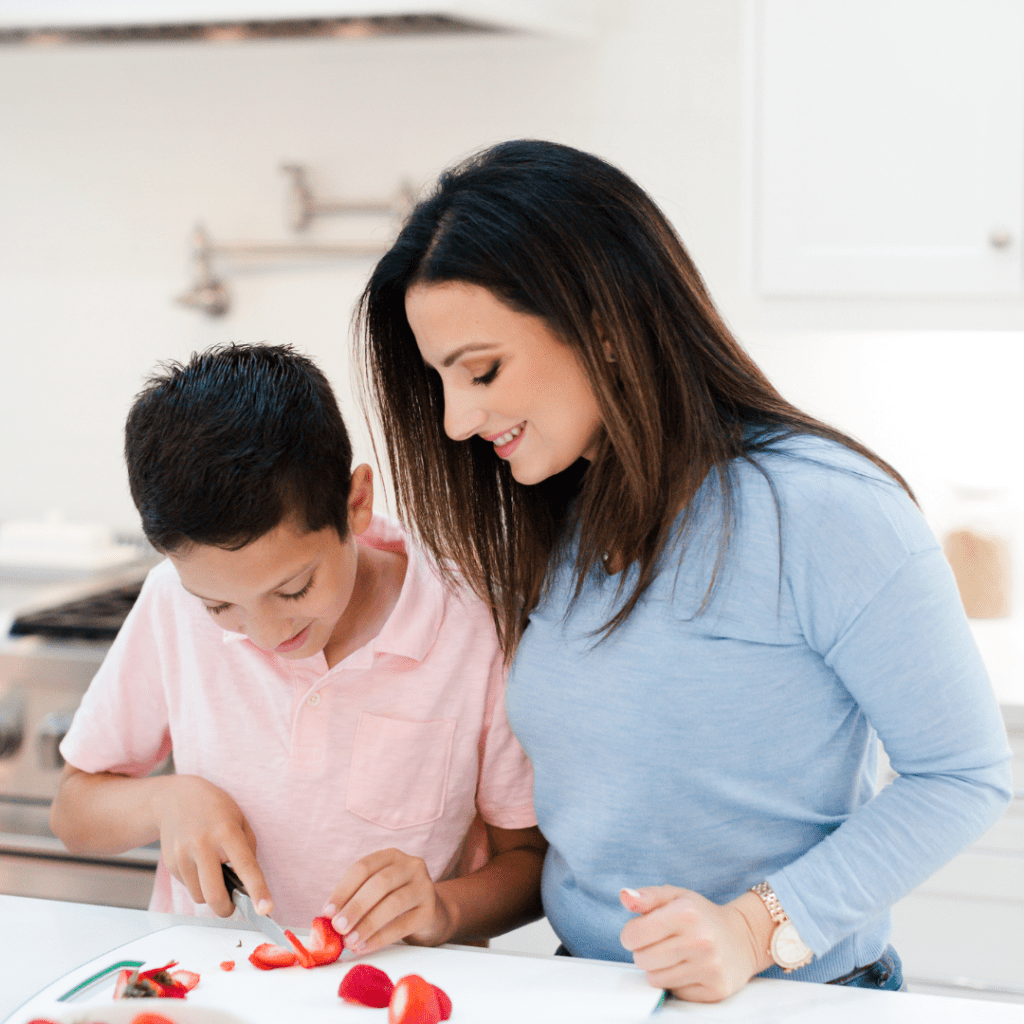
Reason #2: Kids cooking helps them overcome picky eating
My boys went through a difficult picky eating stage, and this was just one of the many tactics I used to help them through it. I mean it when I say that time spent in the kitchen observing and handling different types of foods, and having a hand in preparing food, meant that there was a greater chance of them eating it at mealtimes.
Things they’re uncomfortable touching at mealtime (because they assume they have to eat it or have negative associations with it at mealtime)…all of a sudden become much more appealing to handle in the kitchen! They get a closer and longer opportunity to smell, touch, and even taste-test along the way, which all count as multiple exposures to foods they otherwise wouldn’t get near. This is just ONE of the many strategies I used to get my kids liking so many foods they once hated.
To learn more about my other strategies, and to get a holistic plan to prevent or tackle picky eating for good, check out my Feeding Toddlers online course. It was developed using the best of feeding therapy but with lifetime access and ongoing support.
Reason #3: It’s easier for you!
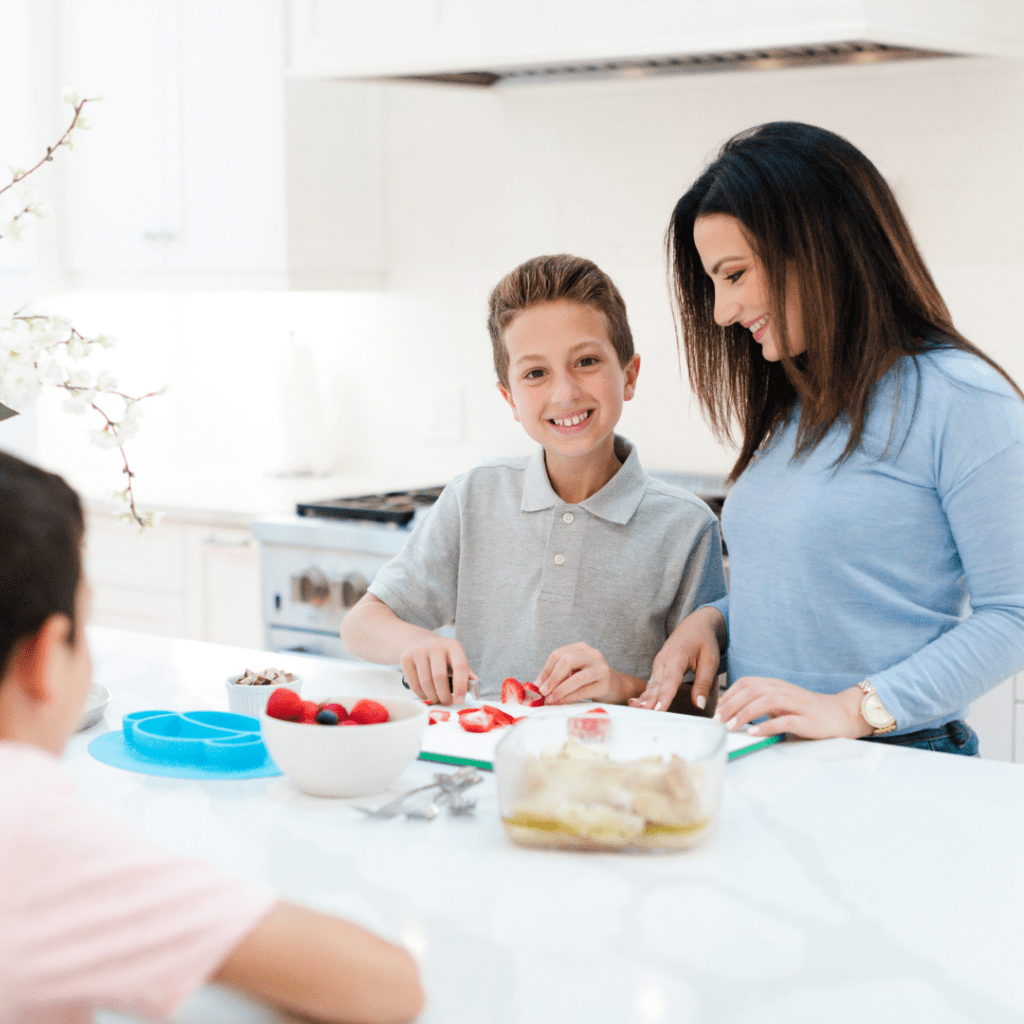
The more independent they are in the kitchen, the more you can look forward to mornings of sleeping in while they make their own (nutritious) breakfast, or can make their own lunches, or can help prep dinner and be an actual helping hand.
So now that you know some basic reasons to begin cooking with your toddler, let’s dive into my biggest tips to making this successful for you and for them.
Top 6 tips for cooking with toddlers
#1: Set aside one kitchen activity per week
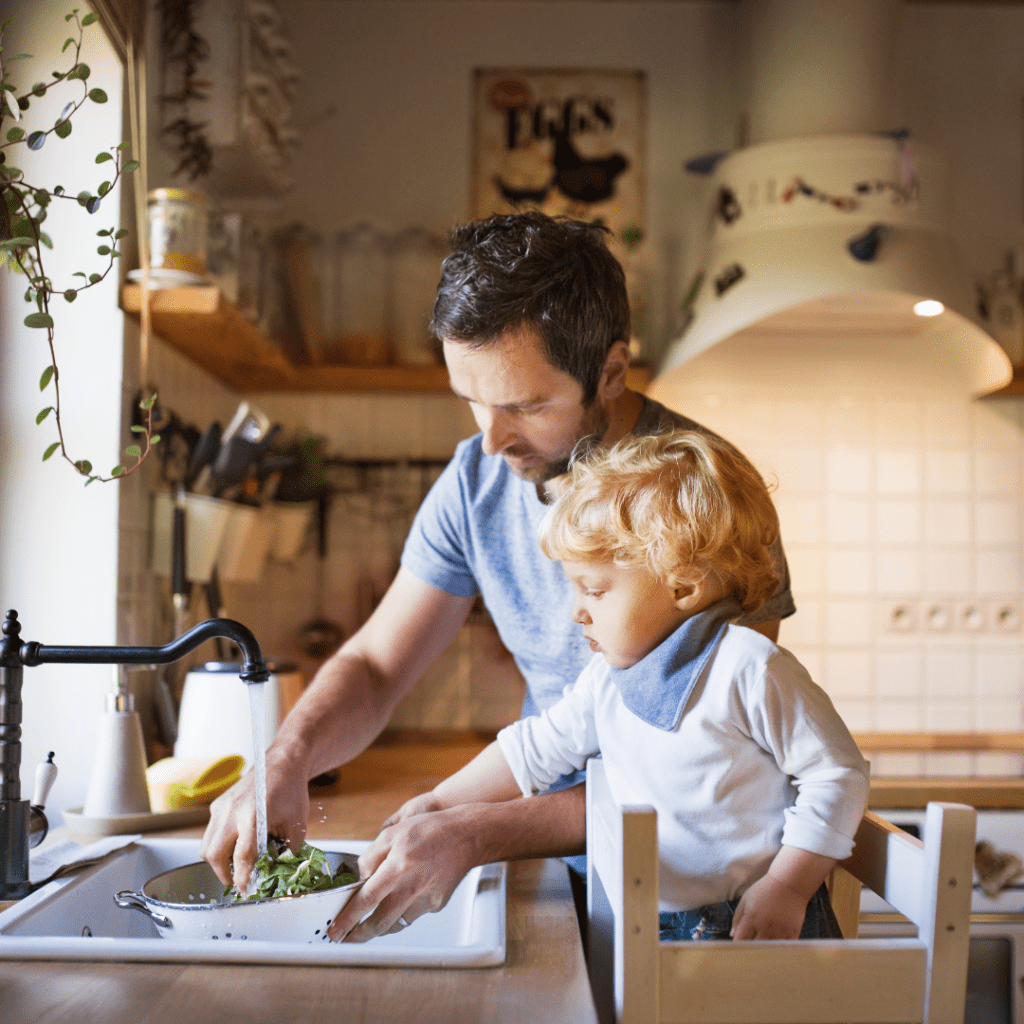
Like anything, if you want them to develop a love for something, they’ve got to spend time doing it so that they can appreciate it. When my son was 3, he hated soccer! He would cry at practices and would want to sit on the sidelines. Although that was an honest reaction, we would still be sure to keep attending the sessions, and now…he lives for soccer!
The same goes for being in the kitchen. I know it sometimes feels like it’s more work to have them in the kitchen, but it’s worth it to try to set up a consistent weekly kitchen session with your child to help form positive memories. This doesn’t have to be some grand cooking adventure where you make a full family meal, just even 10 minutes doing simple tasks to help will be beneficial.
Saturday mornings used to work great for us, things were generally more relaxed and not as rushed so we could cook breakfast together for the family!
#2: Know what tasks are best suited for kids in the kitchen (by age)

Seriously…they’re never too young! Even as babies (yes, I mean it). They don’t have to do much for it to be worthwhile to bring them in and start developing a love for cooking.
Let’s break down some simple tasks that your baby, toddler and preschooler can be part of, by age. Keep in mind that these are just a few things you can do with your child in the kitchen, and try to expand these lists from there, based on their interests and skill level.
6-18 months:

Seat them in the highchair, pull it up next to you in the kitchen and let them watch what you’re doing! Give them a utensil, piece of food (a non-choking hazard of course!) and let them feel like they’re helping you.
Let them smell and touch the ingredients. Talk to them out loud and walk them through what you’re doing.
“I’m cutting the apples, and now I’m going to get the peanut butter and spread it on the apples like this”.
They don’t have to be able to see everything, and it may even seem like they aren’t listening much, but trust me, all the verbal instructions you’re giving make them feel like part of the process. And in turn, it starts to create that positive, participative experience we’re looking to instill in them.
18 months - 3 years:
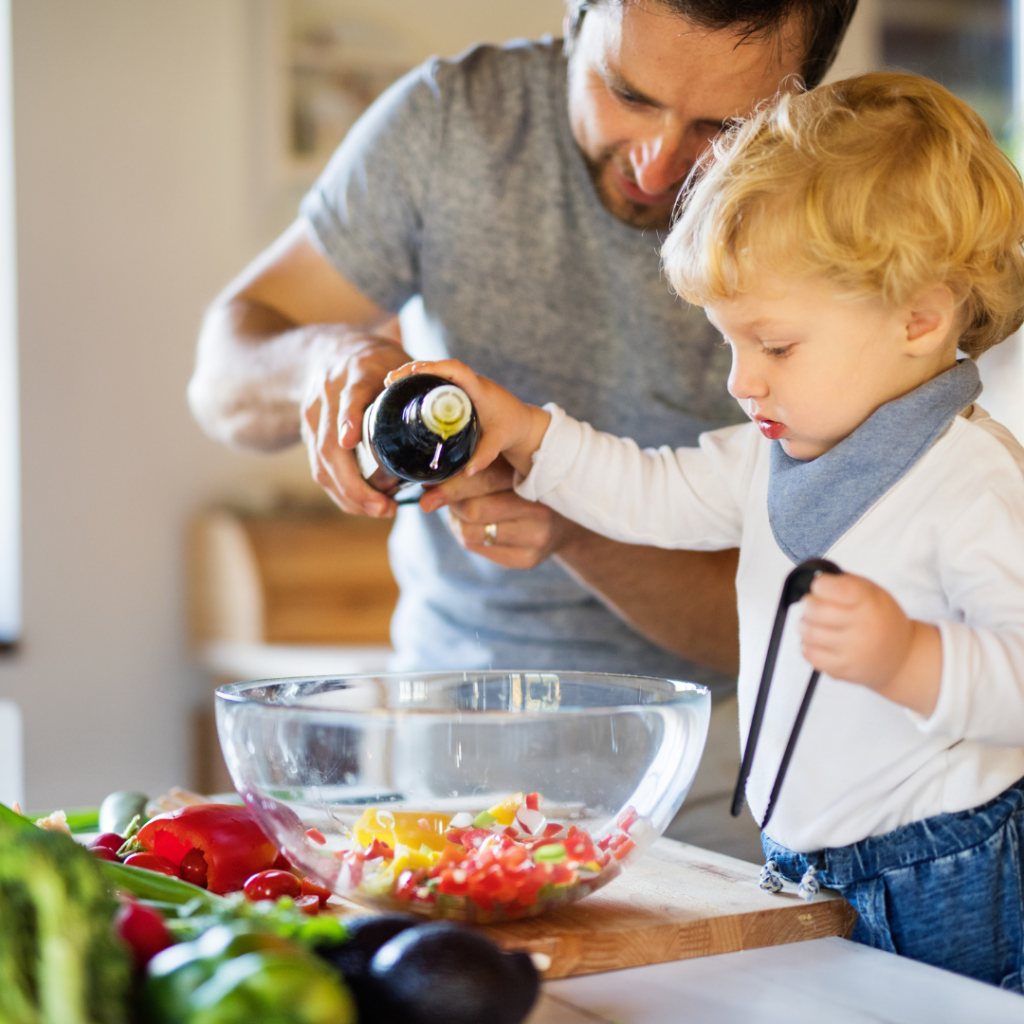
This is when you can really start to get your toddler involved in the actual cooking process. Below are some of the easiest tasks you can have them help with. Remember to talk with them throughout the process as well, even if they can’t talk back much yet, as this will create a feeling of inclusion, bonding, and just helps to contribute to an overall positive experience for them.
Toddlers can help in the kitchen by:
- Pouring dry and liquid ingredients into a bowl
- Rinsing fruits and vegetables
- Picking herbs off the stem
- Tearing greens into pieces
- Stirring batter in a bowl
- Sprinkling salt or herbs
- Sorting foods (ie. raspberries in this bowl, blueberries in this one)
- Using a butterknife (ie. spreading peanut butter, slicing bananas)
4-5 years:
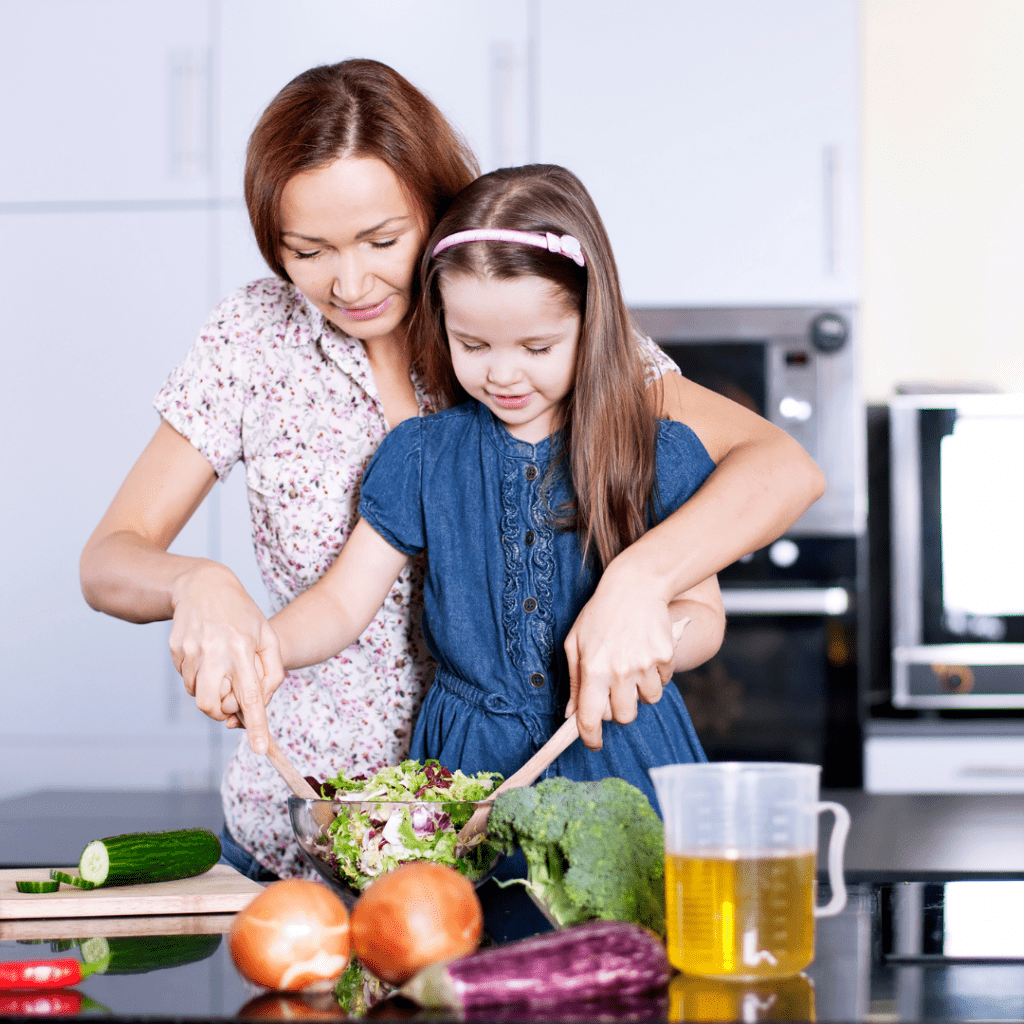
As they get older they can graduate to helping with more significant, or difficult tasks in the kitchen. For these, some tools specific for young children may be required. Take a look at my podcast episode on this topic for a free downloadable guide on recommended kitchen tools for toddlers and preschoolers.
Preschoolers and young school-aged children can help by:
- Cutting soft foods with a kid’s safe knife
- Cracking eggs
- Measuring and leveling dry ingredients with a straight edge
- Spreading butter and jam
- Setting the cooking timer
- Whisking a vinaigrette or other sauce (provided it isn’t too thick to stir easily)
- Peeling a cooled hard-boiled egg
- Scrubbing potatoes
- Greasing a baking pan
5 - 9 years:
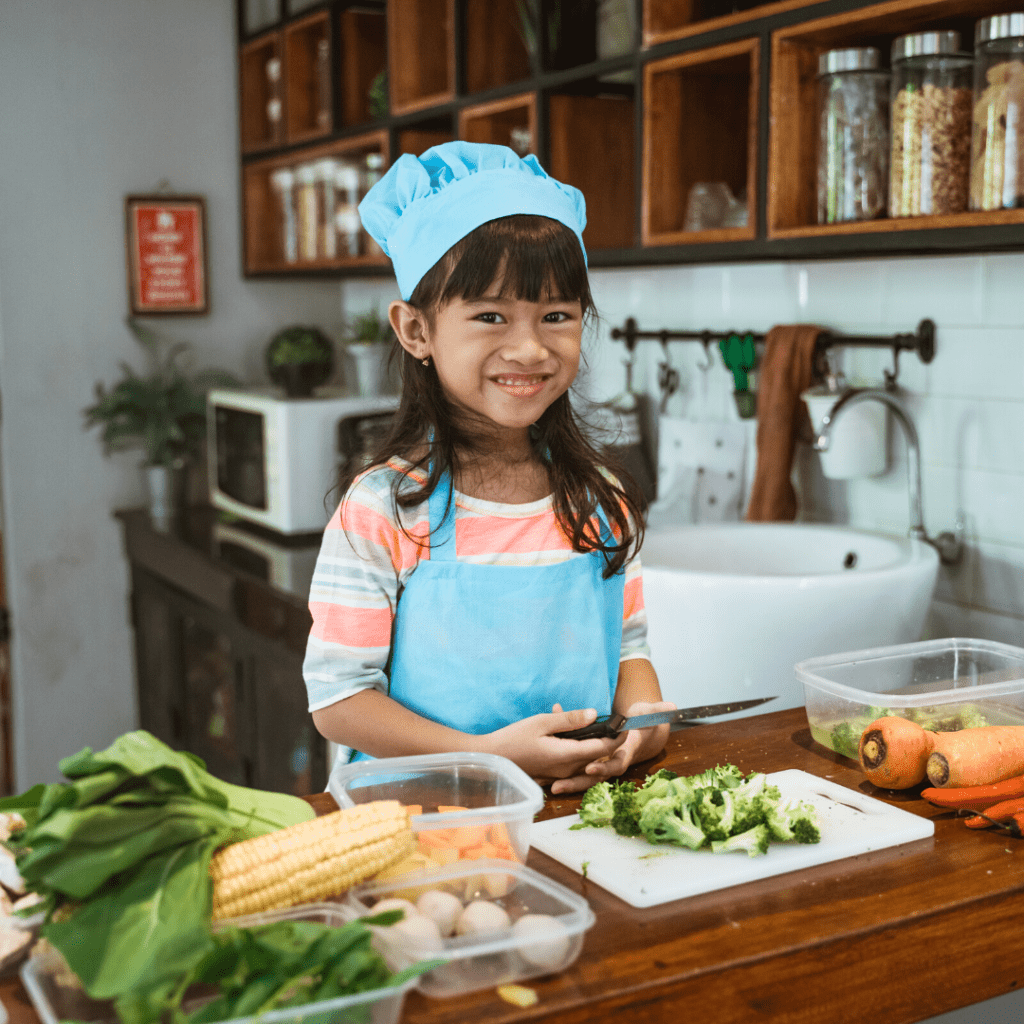
Okay, here’s where you really start to notice that these kitchen adventures together are more helpful than they are work or overwhelming. I know that during the toddler phase, “helping” in the kitchen often comes with so much mess that we often question if it’s worth it, but it truly is and here’s the age where you can start to notice those benefits.
School-aged children can help in the kitchen by:
- Using real knives (paring knives closer to 5 years of age, and chef knives closer to 9 years of age) to help prep ingredients
- Cooking with you at the stove (sautéing, grilling, boiling etc.)
- Using a can opener, garlic press, lemon squeezer, hand mixer, etc.
- Peeling fruits and vegetables
- Grating cheese with a box grater
- Draining and slicing tofu
- Forming patties for burgers (try making our Apple Sage Beef Burgers with them!)
- Scooping batter into muffin cups (try making our Chicken Curry Rice Cups with them!)
- Slicing bread
- Threading food onto skewers
- Reading recipes
- More advanced measuring (fractions etc.)
Moving onto my other top tips now that you have some ideas for how to get started cooking with kids!
#3: Involve them in meal planning
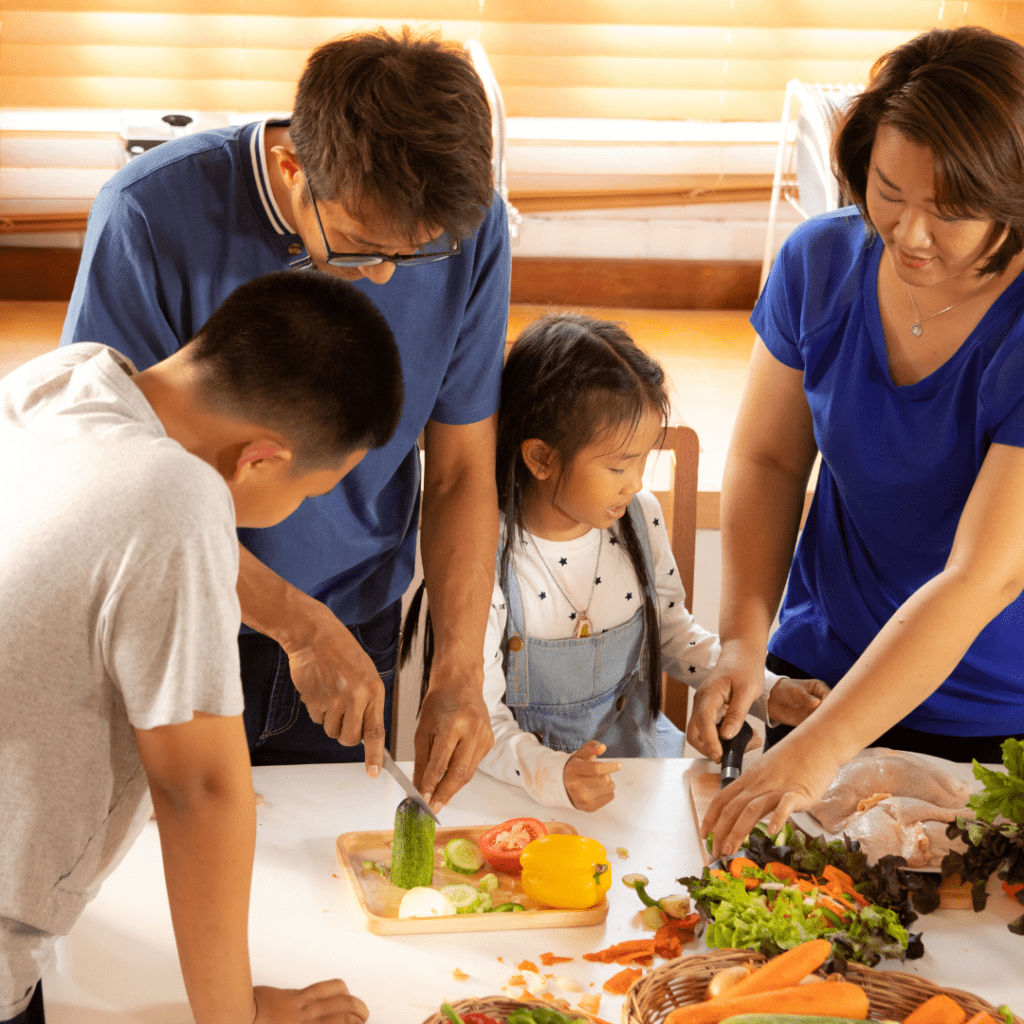
Let them choose at least one recipe a week (if not more with your approval) to add to your meal plan. You can do this by scrolling through recipe photos online or through a favorite recipe book from home.
We have lots of delicious ones pinned to various boards on our Pinterest page, that would be the perfect place to browse!
The more control they feel over the process, the more excitement about it they will have – and the more cooperation you’ll experience as well!
#4: Let them cook for someone else
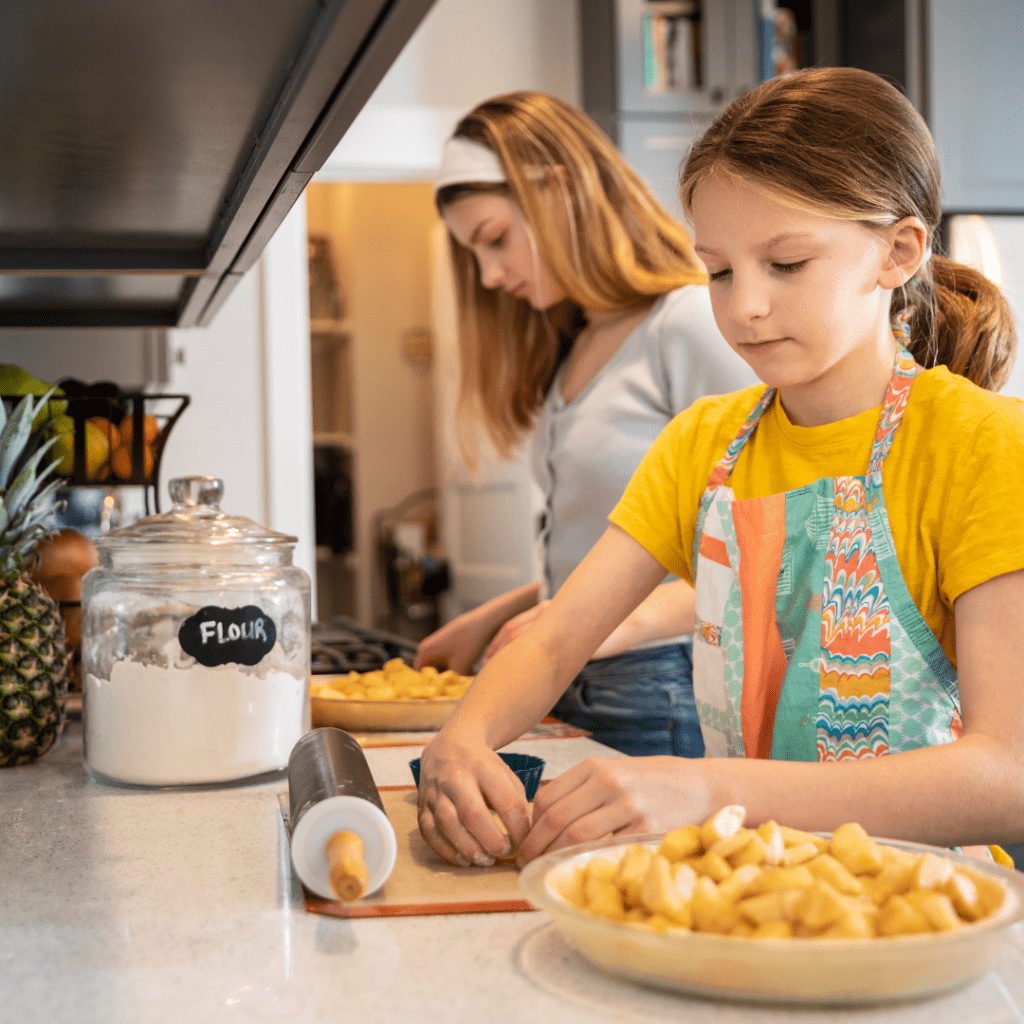
Nothing is more exciting than cooking for a dad, sibling or better yet…for grandparents! Kids get such a sense of pride when their loved ones try a meal they helped make (and everyone inevitably says it’s the best meal they’ve ever had!).
And as they get older, continue to hand more of the tasks off to them. The more they do for themselves, the more they will see how capable they are, and eventually they won’t feel like they need your help at all. That’s how you end up with kids who can make themselves simple meals – or better yet – make breakfast for you!
#5: Don’t pressure them to eat, but DO encourage them to explore
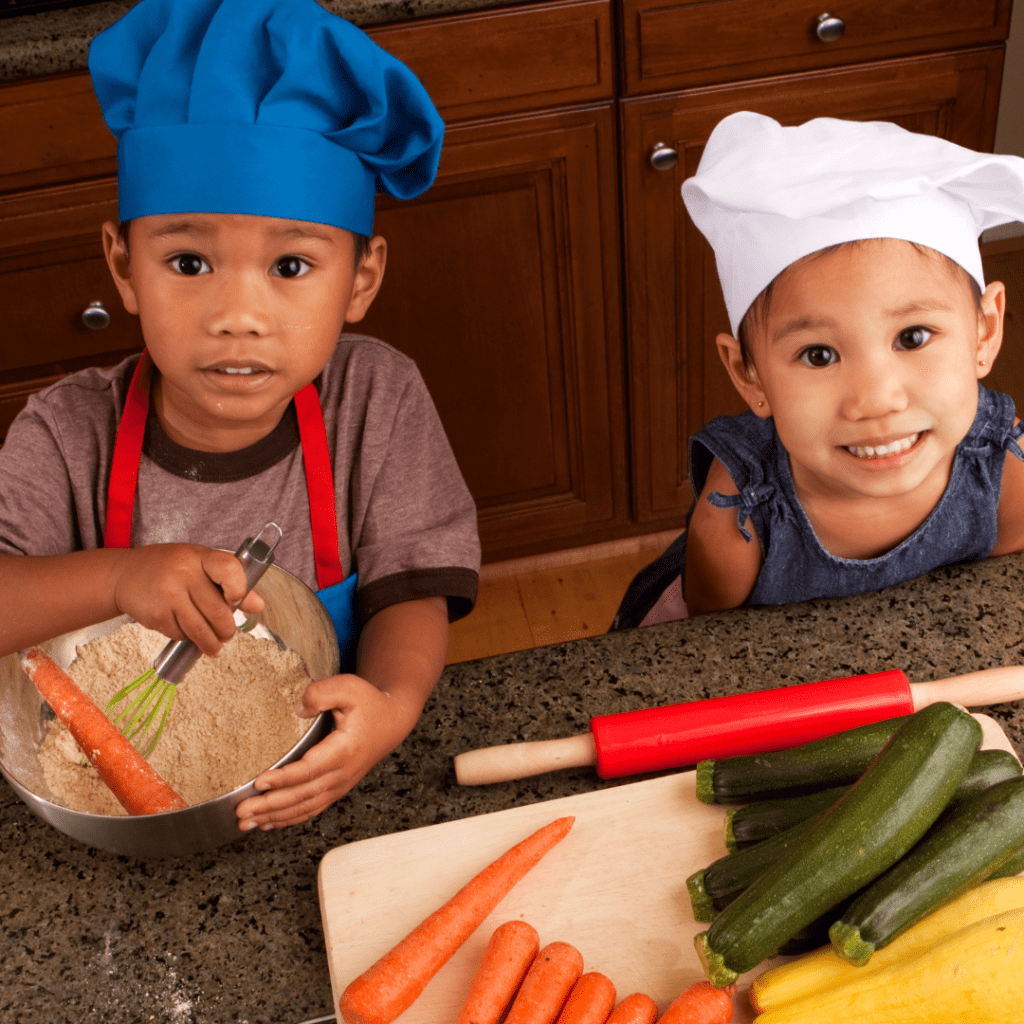
A lot of times, we have hidden agendas when it comes to activities around food. We want our kids to eat the salad we’re washing, to eat the broccoli we’re chopping, etc. And not only eat it…but like it! The thing is, these types of expectations result in a pressured environment, and if you haven’t already figured it out…feeling pressured when doing an activity takes out the fun.
It’s why pressuring at the dinner table results in kids not wanting to come to the table to eat dinner. It’s why they push back and act up around food. That is NOT the feeling and experience we want them to have in the kitchen (let alone the dinner table).
Instead of pressuring them to eat and try foods in the kitchen, encourage them to explore and talk about the food…like you’re scientists! Get curious about it like a chef.
What happens when I put this and this together?
What do you notice about the texture once you start heating it up?
Do you think this would taste better with this spice or this spice? How do you know?
You’ll find that when you don’t directly make it about eating and instead make it about touching, smelling, and tasting (like a chef…and only if they want to), you’ll see that the likelihood that they are willing to eat it will jump up 1000%.
#6: Keep cooking with toddlers a positive experience

The final tip is to keep things positive. This means, showing them what to do (and avoiding constantly correcting them). Let them try things themselves (instead of saying “watch me do it”).
I know it’s going to be messy. That’s part of the process when cooking with kids. It’s best to anticipate it, choose a time when you’re able to spend a little extra time cleaning up together, and make sure you can laugh your way through it vs. stressing out about it.
Turn on their favorite tunes – Disney soundtracks anyone? – and dance while you stir ingredients or wait for things to cook in the oven. The more fun you have together, the more likely they’ll want to continue cooking with you again and again.
And before long, you’ll have a child that despite having a busy schedule and friends to see, will look forward to Friday nights cooking with the whole family and experimenting with new recipes because it’s been one of their happiest memories throughout their childhood. Take it from me, I’ve reached that point of parenthood already, and it’s a beautiful thing!
Overall, these tips are just SOME of the ways to help your kids love the process of cooking and being in the kitchen, and I really do hope you try them out. Remember back to the best experiences you had in the kitchen as a kid, and see what positive elements of that memory stood out to you and what you can recreate yourself. You’ll be raising a child who’ll have competency in the kitchen, who’ll overcome picky eating and who can one day pass on the same love for cooking to their children.
And if you’re in the thick of it right now, struggling with a picky toddler (or scared that you’re heading in that direction) check out my Feeding Toddlers online course for a complete step-by-step process for preventing or reversing picky eating. This is the best of feeding therapy, all rolled into one affordable course with lifetime access and ongoing support.
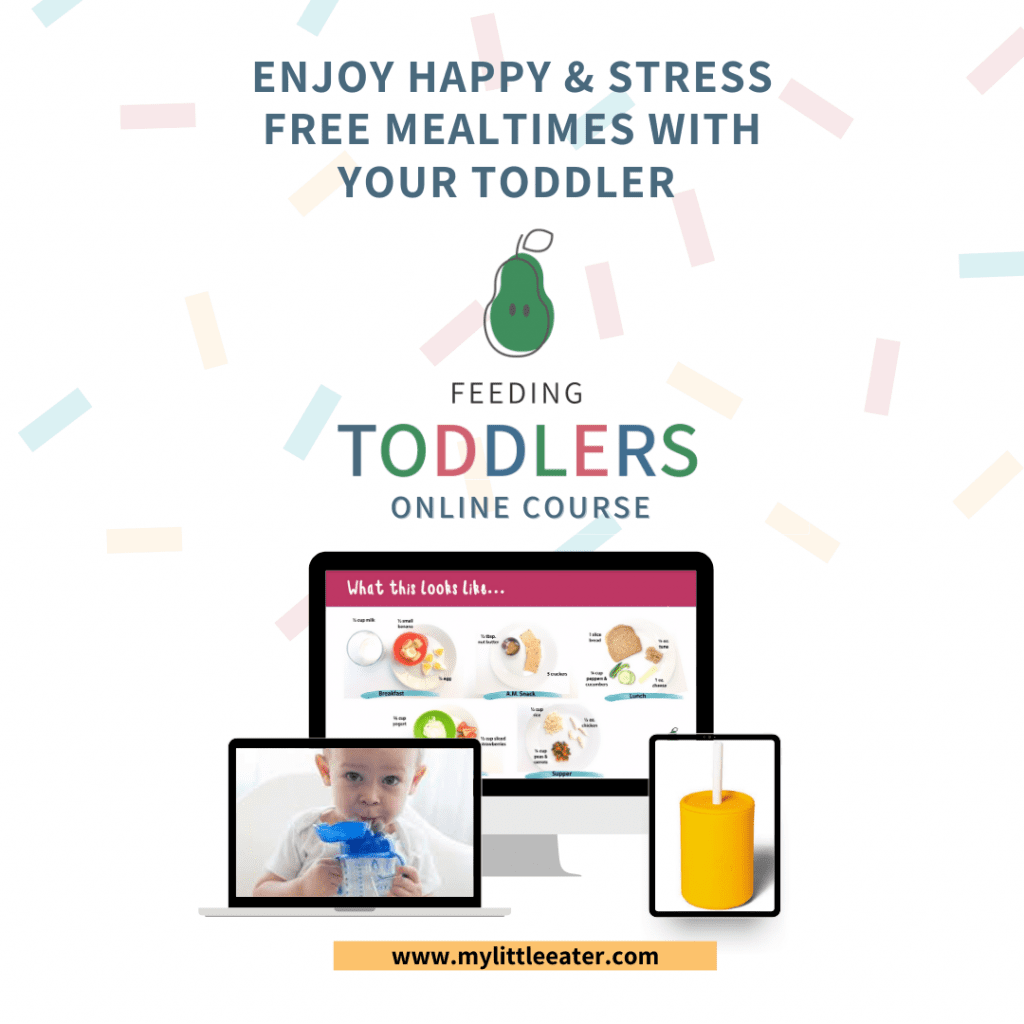
Found this helpful? Pin it to save for later!
